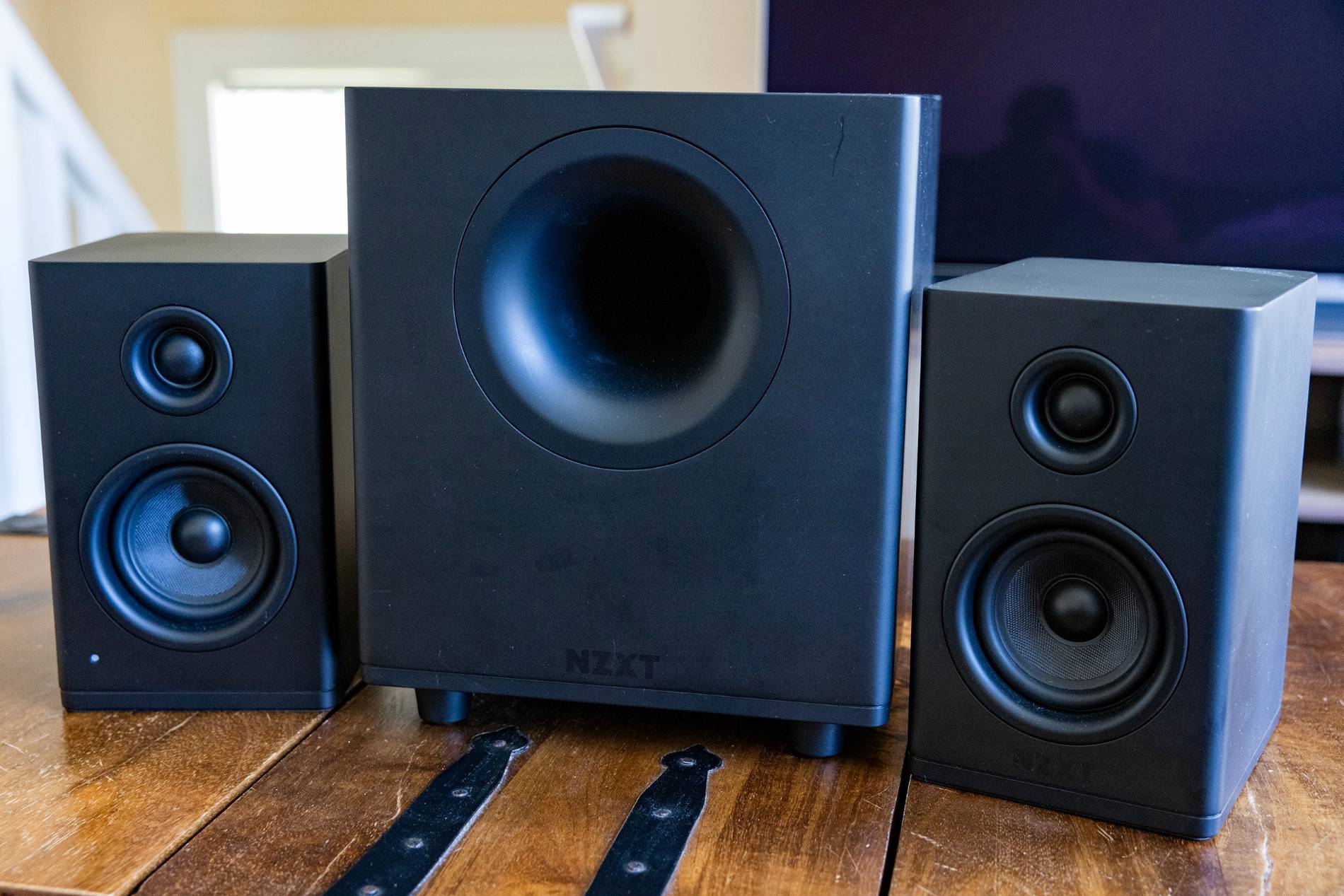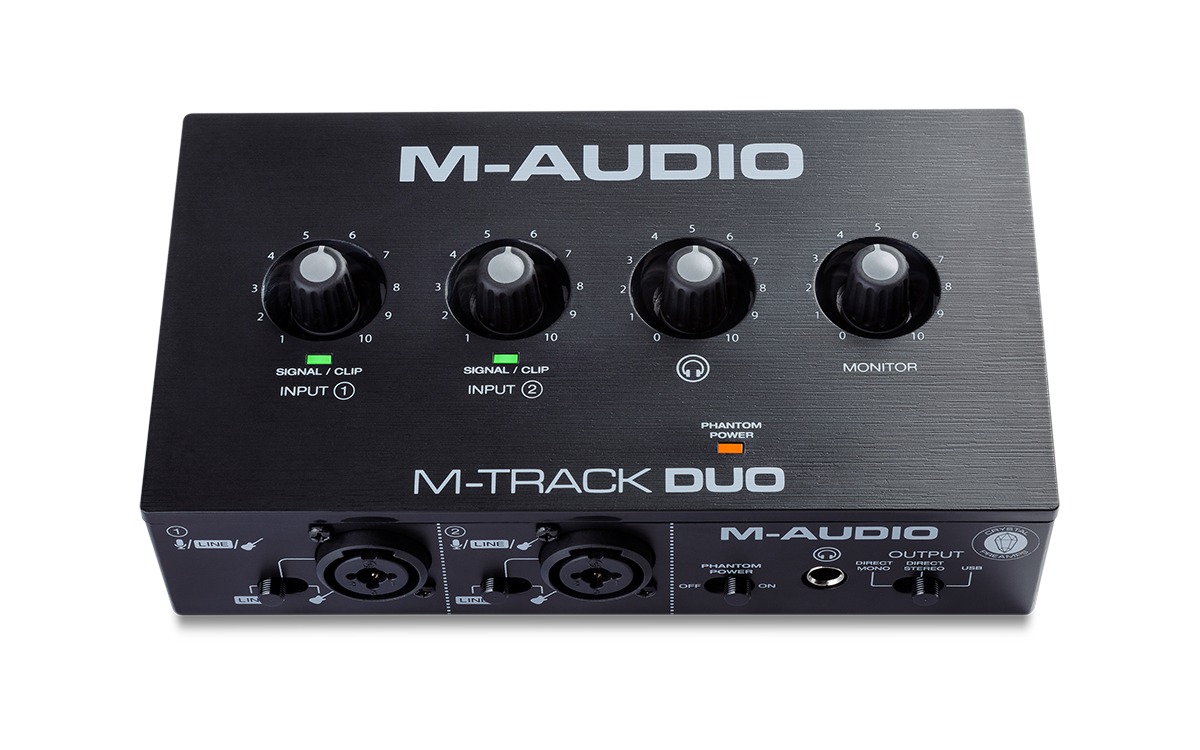Home>Devices & Equipment>Subwoofer>What Direction Should Subwoofer Face


Subwoofer
What Direction Should Subwoofer Face
Modified: February 18, 2024
Looking for the perfect placement for your subwoofer? Discover the ideal direction to face your subwoofer for optimal bass performance.
(Many of the links in this article redirect to a specific reviewed product. Your purchase of these products through affiliate links helps to generate commission for AudioLover.com, at no extra cost. Learn more)
Table of Contents
Introduction
When it comes to setting up a subwoofer, one important consideration is the direction in which it should face. The direction of the subwoofer can have a significant impact on the overall sound quality and performance of your audio system. But with so many conflicting opinions and contradictory advice out there, it can be confusing to know which direction is the best.
In this article, we will explore the benefits and drawbacks of facing the subwoofer towards different directions. We will also discuss the factors that you should consider when deciding the direction in which your subwoofer should face. Additionally, we will delve into the different placement options for subwoofer direction and provide tips for positioning your subwoofer correctly.
Whether you are a beginner in the world of audio systems or an experienced audiophile, this article will provide you with valuable insights to help you make an informed decision about the direction in which your subwoofer should face.
Benefits of Facing the Subwoofer Towards…
When it comes to the direction in which you should face your subwoofer, there are several benefits to consider. Here are some of the key advantages:
- Improved Bass Response: One of the main benefits of facing the subwoofer towards a specific direction is improved bass response. By strategically positioning the subwoofer, you can enhance the low-frequency sound reproduction and achieve a more balanced and impactful bass reproduction. This can greatly enhance your listening experience, especially when it comes to movies, music, and gaming.
- Reduced Interference: Another advantage of facing the subwoofer towards a particular direction is the reduction of interference with other sound sources. By directing the bass energy towards a specific area, you can minimize unwanted reflections and acoustic anomalies that can negatively affect the overall sound quality. This can help create a more focused and immersive listening experience.
- Enhanced Soundstage: Properly positioning and facing the subwoofer can contribute to a wider and more defined soundstage. By directing the low-frequency sound waves towards the desired listening area, you can create a more spacious and three-dimensional sound image, making the audio sound more natural and realistic. This can be particularly beneficial for home theater setups, where a captivating and immersive soundstage can greatly enhance the movie-watching experience.
- Optimized Room Mode Interaction: Room mode interaction refers to the way sound waves interact with the dimensions and characteristics of a room. By facing the subwoofer towards a specific direction, you can optimize the room mode interaction and minimize acoustic issues such as standing waves and resonances. This can result in a cleaner and more even bass response throughout the listening area.
- Improved Integration with Speakers: Properly positioning the subwoofer and facing it towards the main speakers can help achieve a seamless integration between the subwoofer and the rest of the audio system. This can ensure a smooth transition between the low-frequency reproduction of the subwoofer and the midrange and high-frequency reproduction of the speakers, creating a more cohesive and balanced sound signature.
Overall, facing the subwoofer towards a specific direction can result in improved bass response, reduced interference, enhanced soundstage, optimized room mode interaction, and improved integration with speakers. Considering these benefits, it is worth taking the time to experiment with different subwoofer placements and directions to find the configuration that works best for your specific room and audio system.
Drawbacks of Facing the Subwoofer Towards…
While there are several benefits to facing the subwoofer towards a specific direction, it is important to also consider the potential drawbacks that may arise. Here are some of the drawbacks to keep in mind:
- Uneven Bass Distribution: Depending on the placement and direction of the subwoofer, there is a possibility of uneven bass distribution throughout the room. Poor positioning or facing the subwoofer towards a boundary wall, for example, can result in excessive bass in certain areas and weak bass in others. This can lead to an imbalanced listening experience and may require additional adjustments or acoustic treatments to correct.
- Restrictive Listening Area: Facing the subwoofer towards a specific direction may limit the optimal listening area within the room. If the subwoofer is solely directed towards one spot or a specific seating position, other areas of the room may experience a less impactful bass response. This can be problematic if you have multiple seating areas or if you frequently move around the room while enjoying your audio system.
- Room Resonances: In some cases, facing the subwoofer towards a particular direction can exacerbate room resonances. Room resonances occur when specific frequencies reinforce or cancel each other due to the dimensions and characteristics of the room. Improper subwoofer placement or direction can amplify certain resonances, resulting in a boomy or muddy bass response. Careful consideration of room acoustics and experimentation may be necessary to overcome this challenge.
- Limited Placement Options: Facing the subwoofer towards a specific direction may limit the placement options within the room. You may need to position the subwoofer in a particular place or orientation, which may not be ideal from an aesthetic or practical standpoint. This can be an issue if you have limited space or if you prefer a more flexible setup that allows for easy repositioning of the subwoofer.
- Interaction with Room Furnishings: When facing the subwoofer towards a specific direction, it is important to consider how it interacts with room furnishings. Placing the subwoofer too close to furniture or walls can result in unwanted vibrations or resonances that affect the overall sound quality. It may require careful positioning or the use of isolation devices to minimize these interactions.
While these drawbacks should be taken into account, it is important to note that they can be mitigated or even eliminated by implementing proper subwoofer placement strategies, considering room acoustics, and experimenting with different configurations. By addressing these challenges, you can optimize the performance of your subwoofer and achieve the desired bass response in your listening environment.
Factors to Consider When Deciding the Direction…
When determining the direction in which to face your subwoofer, there are several important factors to consider. These factors can help you make an informed decision that optimizes the performance and integration of your subwoofer within your audio system. Here are some key factors to keep in mind:
- Room Layout: The layout and dimensions of your room play a crucial role in determining the direction in which you should face your subwoofer. Consider the shape of the room, the position of the walls, and any furniture or obstacles that may affect the sound waves. Experimentation and careful observation can help you identify the optimal direction that provides the best bass response across different seating positions.
- Listening Position: Take into account the primary listening position in your room. The direction in which your subwoofer faces should ideally align with this position to provide a balanced and immersive listening experience. Consider the distance between the subwoofer and the listener, as well as any potential obstructions or reflections that may hinder the sound waves from reaching the listening position effectively.
- Speaker Placement: Consider the placement of your main speakers when deciding the direction in which to face your subwoofer. The goal is to achieve a seamless integration between the subwoofer and the speakers, ensuring a smooth transition in the frequency response. Experiment with different positions and orientations to find the configuration that provides the best overall sound quality and imaging.
- Room Acoustics: The acoustic properties of your room have a significant impact on the performance of your subwoofer. Take note of any room resonances, reflections, or nodes that may affect the bass response. Positioning the subwoofer and facing it towards the direction that minimizes these acoustic issues can greatly improve the overall sound quality and accuracy of the bass reproduction.
- Personal Preference: Ultimately, your personal preference and listening preferences should also be taken into account. Consider the type of music or content you primarily listen to and how you want the bass to be reproduced. Some individuals may prefer a more punchy and impactful bass, while others may prefer a smoother and more balanced bass response. Experiment with different directions to find the configuration that best suits your taste.
It is important to note that these factors can interact with each other, and finding the optimal direction for your subwoofer may require some trial and error. Take the time to experiment with different configurations, make subtle adjustments, and listen attentively to the changes in sound quality. By considering these factors and fine-tuning the setup, you can achieve a well-integrated and immersive audio experience that brings your favorite content to life.
Placement Options for Subwoofer Direction
When determining the direction in which to face your subwoofer, there are several placement options to consider. The choice depends on factors such as room layout, speaker placement, and personal preference. Here are some common placement options for subwoofer direction:
- Front-Facing: Placing the subwoofer facing forward, towards the front of the room, is a popular choice. This direction allows for a more direct and focused bass response towards the listening area. It can work well in setups where the main speakers are also positioned towards the front of the room.
- Downward-Facing: Some subwoofers are designed with downward-firing drivers, allowing for placement on the floor with the drivers facing down. This configuration can help eliminate the visual presence of the subwoofer and can provide a more uniform bass distribution throughout the room. It is especially useful in setups with hard surfaces, as it minimizes the reflection of bass waves off the floor.
- Corner Placement: Placing the subwoofer in a corner of the room can provide additional bass reinforcement due to the natural amplification effect created by the walls. This direction can result in a more pronounced low end and can be beneficial for smaller rooms or setups where space is limited.
- Opposite Wall Placement: Placing the subwoofer on the wall opposite to the main speakers can provide a balanced bass response across the room. This configuration can help mitigate standing waves or resonances that may occur when the subwoofer is placed too close to the main speakers.
- Multiple Subwoofers: Another option to consider is using multiple subwoofers positioned in different directions. This approach can help overcome room acoustic challenges and provide a more even bass response throughout the listening area. By strategically placing multiple subwoofers, you can achieve better bass distribution and minimize room resonances.
Remember that the ideal placement option will depend on your specific room and setup. It may require some experimentation and adjustments to find the configuration that delivers the best bass response and integration with the rest of your audio system.
Additionally, considering proper subwoofer isolation through the use of isolation pads or platforms can help reduce vibrations and improve overall sound quality. This is particularly important when the subwoofer is in close proximity to furniture or walls.
Be sure to take measurements and use your ears to gauge the impact of different placement options. Trust your judgment and listen for a balanced and cohesive sound that enhances your listening experience.
Understanding Room Acoustics and Subwoofer Placement
When it comes to subwoofer placement, understanding the role of room acoustics is crucial. The characteristics of your room can greatly influence the performance and effectiveness of your subwoofer. Here, we will explore the key aspects of room acoustics to consider when positioning your subwoofer:
Resonances and Standing Waves: Rooms have natural resonances and standing waves at specific frequencies, which can cause certain frequencies to be amplified or attenuated. These room modes can create peaks and dips in the frequency response, affecting the overall sound quality. Careful placement and positioning of the subwoofer can help mitigate these issues by minimizing the interaction between the subwoofer’s output and the room’s resonant frequencies. Experiment with different subwoofer locations to find the best position that smoothes out room resonances.
Boundary Effects: The proximity of a subwoofer to room boundaries, such as walls and corners, can significantly impact its bass performance. Placing the subwoofer too close to walls or corners can result in an increase in bass output due to boundary reinforcement. This can lead to boomy or uneven bass reproduction. Conversely, positioning the subwoofer away from boundaries can help achieve a more balanced and accurate bass response. Experiment with different distances from room boundaries to find the optimum placement for your subwoofer.
Room Size and Shape: The size and shape of your room can also affect bass reproduction. Larger rooms tend to disperse bass energy more easily, while smaller rooms may reinforce bass due to standing waves. Additionally, irregularly shaped rooms can create complex acoustic interactions. Understanding your room’s size and shape can help you determine the best placement options for your subwoofer. Consider using room correction tools, such as equalizers or bass traps, to address any specific acoustic challenges your room may present.
Room Treatments: Adding acoustic treatments to your room, such as bass traps and absorptive panels, can help improve the performance of your subwoofer. These treatments can help minimize unwanted reflections, reduce reverb, and control standing waves, resulting in a cleaner and more accurate bass response. Experiment with different treatments and placements to achieve a more controlled and balanced acoustic environment.
Listening Position and Speaker Subwoofer Integration: The position of your listening area and the integration between your main speakers and the subwoofer are also crucial considerations. The subwoofer should be positioned to allow for a smooth transition of frequencies between the speakers and the subwoofer. This can help achieve a cohesive and immersive listening experience. Experiment with subwoofer placements that facilitate seamless blending and integration between the main speakers and the subwoofer.
By understanding the unique characteristics of your room and how they interact with your subwoofer, you can optimize the placement for better bass response and overall sound quality. Take the time to experiment and fine-tune the position and placement of your subwoofer to achieve the best possible audio experience in your specific listening environment.
Tips for Positioning the Subwoofer Correctly
Positioning your subwoofer correctly is crucial to achieving optimal bass performance and integration within your audio system. Here are some tips to help you position your subwoofer correctly:
- Experiment with Placement: Start by placing the subwoofer at your usual listening position and then move around the room to identify potential locations that deliver the best bass response. Experiment with different placements before settling on the final position. Small adjustments, even just a few inches, can make a noticeable difference in bass output and quality.
- Consider the Room Layout: Take into account the layout of the room and how it affects the acoustics. Avoid placing the subwoofer in corners or against walls, as this can result in boomy or uneven bass. Instead, aim for a balanced distribution of bass throughout the room by finding a position that minimizes the impact of room resonances and reflections.
- Avoid Obstacles: Ensure that the subwoofer is not obstructed by furniture or other objects. Obstacles can interfere with the bass waves and cause unwanted vibrations or resonances. Leave some space around the subwoofer for proper airflow and to allow the bass energy to disperse evenly in the room.
- Experiment with Subwoofer Direction: Try different directions for the subwoofer. Face it towards the front of the room, towards the listening position, or experiment with alternative angles. Each direction can have a different impact on bass response and integration with the rest of the audio system. Listen critically and choose the direction that provides the best overall balance and impact.
- Utilize Room Modes: If you are experiencing a lack of bass in specific areas of the room, you can take advantage of room modes. By placing the subwoofer strategically in a room mode area, you can maximize the bass response at those frequencies. Experiment with placements and measurements to find the spots where the bass is most pronounced.
- Invest in Room Acoustic Treatments: Consider adding room acoustic treatments such as bass traps, diffusers, or absorptive panels. These treatments can help control unwanted reflections, minimize resonances, and improve bass accuracy. Professional acoustic measurement and treatment can greatly enhance the performance of your subwoofer and the overall sound quality in your listening environment.
- Use a Calibration System: Many subwoofers come with built-in calibration systems or include third-party calibration options. These systems use room correction algorithms to measure and adjust the subwoofer’s output based on room acoustics. Calibration systems can help optimize the subwoofer’s performance and ensure accurate bass reproduction in your specific listening environment.
- Consider Multiple Subwoofers: If your budget and room size allow, consider using multiple subwoofers. Multiple subwoofers can help distribute bass more evenly throughout the room and improve overall bass response. When using multiple subwoofers, experiment with different placements and configurations to achieve better coverage and integration of bass frequencies.
Remember that every room is unique, and the optimal positioning of your subwoofer may require some trial and error. Trust your ears and make adjustments based on your personal listening preferences. By following these tips and taking the time to fine-tune the placement, you can enhance the bass performance of your subwoofer and enjoy a more immersive audio experience.
Conclusion
Positioning your subwoofer correctly is crucial to achieving the best possible bass performance and integration within your audio system. By considering factors such as room acoustics, speaker placement, and personal preference, you can make informed decisions about the direction and placement of your subwoofer.
Facing the subwoofer towards a specific direction can offer benefits such as improved bass response, reduced interference, enhanced soundstage, optimized room mode interaction, and improved integration with speakers. However, there are also potential drawbacks, including uneven bass distribution and limited placement options. Understanding these factors and weighing them against your specific requirements will help you find the most suitable configuration for your subwoofer.
As you position your subwoofer, take into account the layout of your room, the characteristics of room acoustics, and the interaction with your listening area and main speakers. Experiment with different placements, directions, and room treatments to achieve the best bass response and overall sound quality.
Additionally, remember to trust your ears and personal preference. Fine-tuning the positioning and configuration of your subwoofer may require some trial and error to find the setup that delivers the most immersive and satisfying audio experience for you.
By following the tips and considerations outlined in this article, you can optimize the performance of your subwoofer and create a well-integrated audio system that brings your favorite content to life with powerful and accurate bass reproduction.











